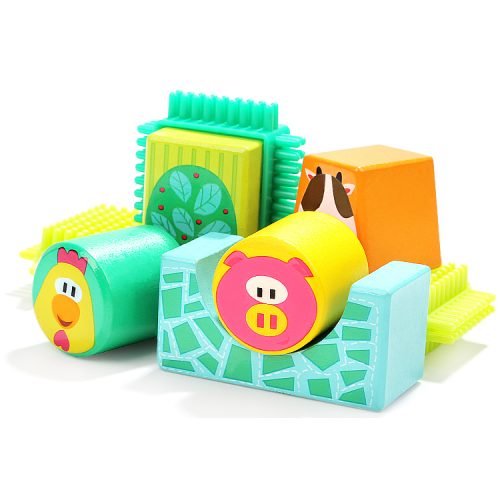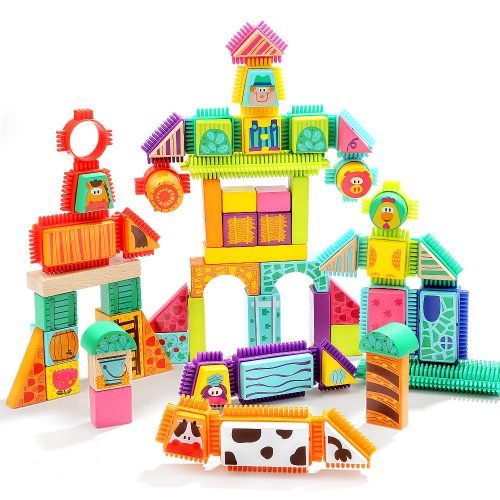
It’s important to avoid making absolute claims about which type of toy is “better” for development, as both plastic and wooden toys have their strengths and weaknesses. However, wooden toys do offer specific advantages that can be beneficial for child development in several ways:
Open-ended design: Unlike many electronic toys with pre-programmed functions, wooden toys typically lack complex features. This open-endedness encourages children to use their imagination, invent stories, and create their own play scenarios. This sparks problem-solving skills, independent thinking, and fuels their creative fire.
Enhanced sensory exploration: Wood offers a unique multi-sensory experience compared to plastic. Its natural texture, warmth, and even subtle scent stimulate children’s sense of touch, smell, and even sight. This rich sensory engagement enriches their understanding of the world and promotes cognitive development.
Promotes sustainability: Choosing wooden toys often means opting for toys made from renewable resources, making them a more eco-friendly choice. This can instill a sense of environmental responsibility in kids from a young age and help them understand the importance of sustainability.
Motor skill development: Many wooden toys, like building blocks and puzzles, encourage essential motor skills like fine motor skills, spatial reasoning, and hand-eye coordination. They can also spark curiosity about math, physics, and engineering concepts in a fun and engaging way.
Calming effect: Studies suggest that wood has a calming effect on children. Its natural properties might help reduce anxiety and promote focus, creating a more peaceful play environment. This can be especially beneficial for children who are easily overwhelmed by sensory input.
Potential for customization: Compared to mass-produced plastic toys, many wooden toys can be personalized with paints, stains, or embellishments. This allows children to express their creativity and create unique, one-of-a-kind pieces that hold even more meaning and personal connection.
Connection to nature: Playing with wooden toys brings the beauty and warmth of the natural world into their play space. This connection can nurture a lifelong appreciation for nature and encourage responsible stewardship of the environment.
However, it’s important to consider some limitations:
Cost: Wooden toys can be more expensive than plastic counterparts.
Maintenance: While less demanding than some materials, they still require care like oiling or waxing to maintain the finish.
Limited design complexity: Due to the nature of working with wood, intricate details and mechanisms might be less achievable compared to plastic toys.
Not inherently educational: Not all wooden toys are inherently educational. While many promote development, some simply encourage open-ended play, which is valuable but might not be the sole focus for everyone.
Safety concerns: While generally safe, choosing high-quality, well-treated wood is crucial to avoid splintering hazards, especially for young children who mouth toys.
Not waterproof: Unlike some plastic toys, they are not waterproof and shouldn’t be submerged in water for extended periods.
Ultimately, the decision of which type of toy to choose depends on your individual priorities and budget. Weighing the potential benefits of wooden toys against their limitations can help you make an informed choice that best suits your child’s needs and your values.







